
Полная версия
Bible of the Time. …from the Big Bang to the present day…
…In the middle of the fifteenth century, the empire shrinks, but stabilizes. At this time, together with his father, the great scientist, mathematician and astronomer, Timurid Ulugbek, ruled (the exact name is unknown, this is a title). He is overthrown by his own, not so smart son. A year later, he himself loses his head. The next Timurid, Abu-Seid, seeking to suppress the civil strife that had gone out of control, invites nomadic Uzbeks to his crumbling state Maverannahr. Those obey the will of the Timurids for a very short time. In 1501, hired soldiers seize Samarkand and drive out into the unknown the last representative of the great dynasty, Muhammad Babur.
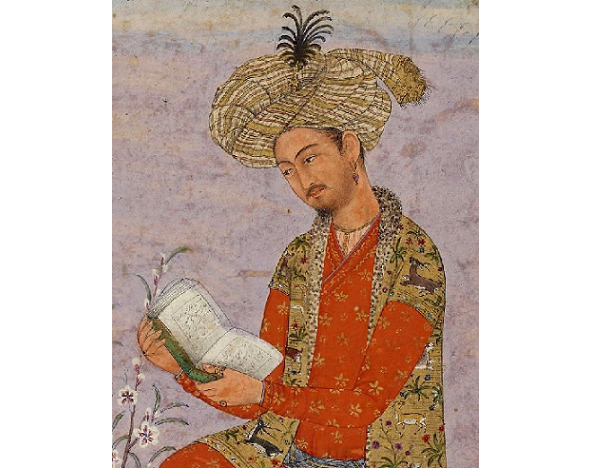
Mohammad Babur, poet and military leader (1483—1530)
Babur has to look for a new homeland for himself and his people. In 1504, he captured Kabul and using it as a huge military base, undertook a campaign in India. Fifteen thousand soldiers with weapons and cannons unusual for that time are enough to crush the army of the Sultan of Delhi, which was twice as numerous. Islam in India has been widespread since the thirteenth century, except for the southern regions, so that the ground has been prepared for a fresh Muslim dynasty that has not been noted in internal conflicts.
Babur is not only a commander, but also a talented poet:
What kind of suffering did you not endure and grievous troubles, Babur?What betrayals, insults, what slander did not know, Babur?But whoever reads «Babur-name» will see how much tormentAnd how much grief the king and poet Babur sufferedGreat Mughals, they are Baburids and to some extent Timurids rule India until the middle of the eighteenth century. Padishah Jahan the First tries to recapture the homeland of the ancestors from the powerful Persia, but fails. His more famous deed is the Taj Mahal mausoleum, dedicated to the memory of his wife Mumtaz Mahal.
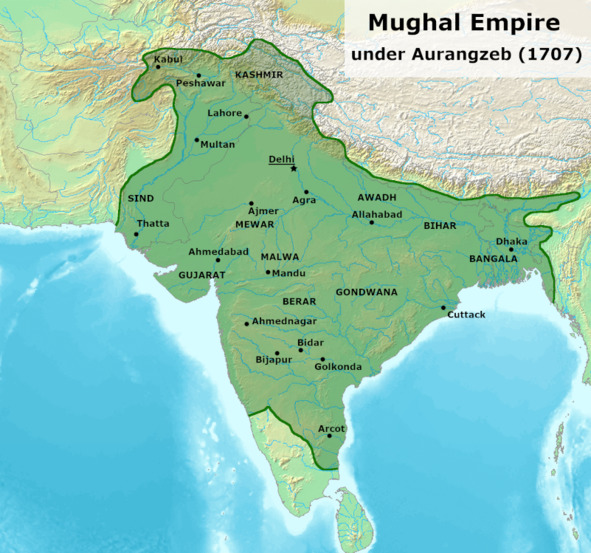
Mughal Empire
Jahan’s son wages even longer and more unsuccessful wars. Adherents of Hinduism revolt. They are defeated, but they turn to guerrilla actions and widespread covert sabotage. Babur’s descendants are degenerating. Court officials deal with their nominal rulers as soon as they sense their slightest attempt to free themselves from obsessive tutelage. The Persians and Afghans burst into India, devastate the regions, take the inhabitants into slavery.
…In September 1852, the British seized Delhi by storm and announced the liquidation of the Mughal Empire.
Royal Russia
Since the fifth century AD, most of Russia, except for Pomorie, has been designated on ancient maps as part of the Attila Hun’s empire. The Huns are nomads of the north of China, in search of adventure and prey, rushing to the West. After the battle with the combined Roman and German forces in the Catalaunian fields, their leader Attila slows down. A year later, for unknown reasons, he dies. His sons quarrel with each other and cannot (and do not want to) do anything sensible for their empire. By 530, this imposing state formation as a whole ceases to exist. In Germanic heroic legends, such as the «Song of the Nibelungs», the Hun Attila looks like an enlightened ruler, whose state of affairs practically does not differ from the European one.
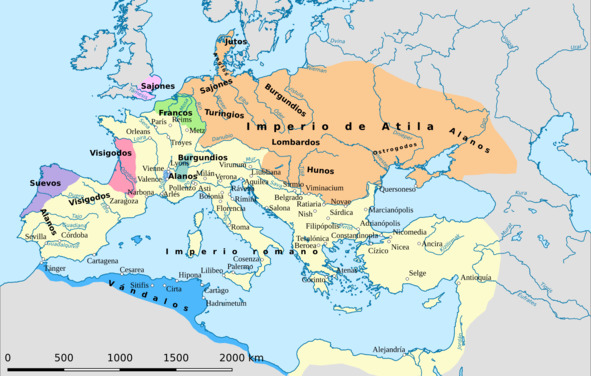
Hunnic Empire (453 AD)

«Serpent’s Shafts». These impressive fortifications are located in echelons, in two or three lines over hundreds of kilometers, to repel the attacks of unknown aggressors from modern Hungary. The shaft closest to Kiev is 40 km away. south of the capital. The time of construction is presumably the second century BC. – seventh century A.D. e. In some areas, the embankment initially reaches a height of 14 m and is complemented by watchtowers.
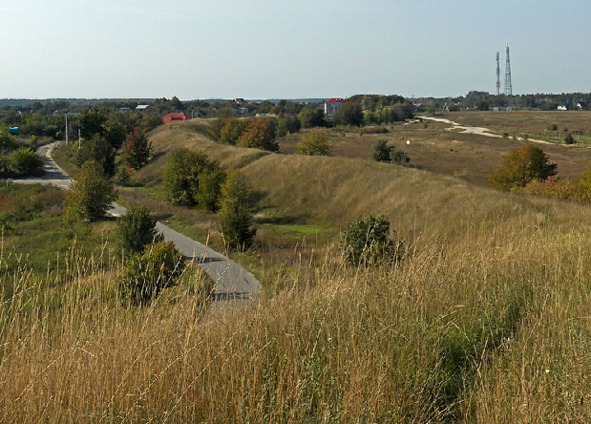
Serpent’s Shafts today
…The Avar Kaganate, composed of the next mighty Asian wave of migration, spreads from the line from the Crimea to the north to the borders of modern France, capturing part of the Balkans. For some time now, the domination of the Avars finally annoys the head of the Holy Roman Empire Charlemagne. The king organizes an extensive military coalition, including and gaining strength Slavic tribes.
In 805, the kaganate suffers a catastrophic defeat. Obry, red-haired, strong, fierce and proud, as the chronicles testify, disappear throughout the territory of their former residence.
…One more, the Khazar Kaganate has a center in modern Dagestan. He controls fragments of Crimea, the Volga region and Kazakhstan. In 660, this kaganate defeats the troops of neighboring (and partially intersecting with the kaganate) Great Bulgaria. The losing tribes are settled all over the world. Some of them form the well-known Black Sea Bulgaria. Other groups leave for the Volga and Kama, form the Volga Bulgaria, become the ancestors of the Kazan Tatars and Chuvashes. As a rule, they convert to Islam, in the struggle against the kaganate, hoping for the help of their fellow believers from Persia. The third group remains in place and pays tribute to the Khazars.
…In 964 the Russian prince Svyatoslav defeats the Khazar army and places the Belaya Vezha fortress in a strategically important place on the Don (now the bottom of the Tsimlyansk reservoir), captures Tmutarakan, the present Taman peninsula. Finally, the Khazars are finished off by a new wave of nomads, the ubiquitous and indefatigable Polovtsians.
Much later, in the thirteenth century, the Polovtsians will become part of the Golden Horde, assimilate, and pass on their (Kipchak) language to the conquerors. The Khazars are scattered throughout the land, possibly making up a significant part of European Jewish communities. Some of their tribes settled in the Crimea and gave rise to the Karaites.
Since 576, the Türkic Kaganate, a kind of reflection of the Khazar Kaganate, shifted to the East to China, rejects a part of the Crimea and the North Caucasus from Byzantium.
…Information about all these state entities is very fragmentary. Often the kaganates are combined both territorially and on a chronological scale. It is only clear that they occupied a significant part of the future Rus, interacted with the Slavic tribes, fought or entered into alliances. The state religion of the Avar and Khazar kaganates is Judaism, fancifully mixed with pagan customs, the Turkic religion is shamanism and Buddhism.
The beginning of the official chronology
…Ninth century AD. Varyag (Viking, Norman), or the Prussian Rurik reigns at the invitation of the people’s veche in Veliky Novgorod, with the brothers Truvor and Sineus. A ruler with a good pedigree, outside of local strife is a worldwide practice to this day.
Some researchers trace the word «Rus» to the Old Icelandic «sailors, rowers». Other historians define it as the self-name of the ancient Baltic (Slavic) people of the Prussians. There is also a version that deduces «Rus» from the ancient Iranian ruksi – «white, light». The name of a single representative of the people initially sounds like «Rusyn».
…Prince Oleg is the regent of Rurik’s son, Igor, seizes the center of trade routes, prosperous Kiev. Then he went with the embassy to Byzantium, where he was first called the Grand Duke in synchronous Byzantine and European sources. Oleg the Prophet dies, as the epics say, from a snakebite.
Prince Igor is for the first time recorded by the Byzantine chronicles as a Russian commander who attacked Constantinople with significant forces – a thousand forty-seat rooks. The Byzantine squadron uses Greek fire. This ancient superweapon destroys most of the Russian fleet. Draw. Peace treaty with the emperor of Byzantium, Roman the First Lacapenus. Diversified trade, political and religious ties are being established.
Where was the base of the first Russian fleet located? Perhaps in Tmutarakan – on the present Taman Peninsula, or in the area of modern Kerch («Korchev»). Crimea at this time was ruled from Taman. Part of the peninsula under the control of the city of Chersonesos, or, in other words, Korsun (within the boundaries of present-day Sevastopol), is controlled by the great Byzantium.
…The prince dies from his greed, trying to re-collect tribute from the Drevlyan tribe. However, the circumstances of the death of the ancient supporter of double taxation are confusing.
Igor’s beloved wife, Olga, the first name of Prekras, is baptized personally by the emperor of Byzantium, Constantine the Seventh. She builds up the government of the country, atones for her sins, is engaged in the upbringing of her son Svyatoslav.

Ancient Russia and other state formations of the 11th century. Rus proper is highlighted in thick green
Svyatoslav is at war with Bulgaria. Then he turns his weapon towards the possessions of Byzantium in Thrace. In 970, the troops of Emperor John the First forced the prince to retreat. Returning, the prince is ambushed by the Pechenegs (a nomadic tribe known until the middle of the eleventh century) and dies.
The next ruler is Vladimir the First Svyatoslavovich, aka Vladimir the Saint, the fruit of Svyatoslav’s connection with a certain almsgiver Malusha. The bastard is brought up under the supervision of Princess Olga.
In 988 another war with Byzantium will take place. Vladimir captures Korsun (Tauric Chersonesos) and concludes a peace treaty. To enter into a dynastic marriage with the sister of the Byzantine emperor Basil II, Anna, here, in the city he captured, the prince is baptized.
The first Kiev metropolitan, attested by written sources – Theophylact. The priest takes under the authority of four bishops – Belgorod, Novgorod, Chernigov, and Polotsk. Theophylact leaves his high post in 1018.
Vladimir Krasnoe Solnyshko is known for his participation in the voluntary-compulsory change of the state religion. He is a character in many folk tales. Under Vladimir the Holy, the church charter was introduced, the minting of «silver coins» began; high quality classic coins that have replaced elongated silver grivnas. Around 980 Vladimir kills Rogvolod, prince of the Polotsk principality (the territory of modern central and northern Belarus). His daughter, Rogneda, he forcibly marries. Three sons from this marriage become an offshoot of the Rurik, Izyaslavich Polotsk or, in other words, Rogvolodovich.
Yaroslav Vladimirovich the Wise, son of Vladimir, prince of Novgorod, Kiev and Rostov. The heyday of the Russian kingdom. Introduction of a set of state laws. Princes and princesses from Yaroslav and his wife, daughter of the Swedish king, Indigerdy are welcomed in France, Hungary, Greece, Norway, Poland and Austria.
Yaroslav achieves the fact that, bypassing the rights of the Patriarch of Constantinople, the Metropolitanate, by a council of bishops, in 1051, is appointed priest Hilarion of Russian origin. However, under the successor of Yaroslav, from 1055 the order of things was restored.
Three centers of power crystallize – Kiev, Vladimir and Veliky Novgorod. Here we can add Polotsk, the capital of the future Belarus. Kiev is an outpost of Russian civilization. Further south, behind the system of the Serpent Shafts erected by someone unknown, are the possessions of the Polovtsy and Mongols, with an island of Russian possessions, Tmutarakan.
The next popular ruler (according to the «ladder» principle of seniority of the princely family, from brother to brother) is Vladimir Vsevolodovich Monomakh, i.e. «Combatant» (1113—1125), grandson of the fifth son of Yaroslav the Wise and the Byzantine emperor Constantine Monomakh, Prince of Rostov, Chernigov, Pereyaslavl, Grand Duke of Kiev. He is known for pushing the Polovtsians away from the borders of Russia (1111, «Crusade» to the Great Steppe), autobiographical texts («Teaching to children», «Chronicle of life»), limiting the arbitrariness of usurers from ex-Khazars in Kiev, freeing debtors.
Less known is the war between the prince and Byzantium, for the interests of the husband of his daughter, the impostor «Leo Diogenes», and then his son (his grandson). There is an opinion that in a series of fierce and, in general, unnecessary battles, Vladimir is depleting the potential of his country, preparing it for a period of fragmentation and decline.
In the twelfth century, from the death of the last strong ruler, Mstislav the Great, the son of Vladimir Monomakh, from the clashes between princes Andrei Volynsky and Yuri Dolgoruky, the Civil War begins. Mstislav’s daughters marry prestigious European kings – Norway, Hungary, Denmark. Then the popularity of matchmaking in these parts of the royal blood falls.

The onslaught of the Mongols is so strong that the desire to resist them quickly disappears. So, the city of Ryazan, the capital of the flourishing Ryazan principality after the assault in 1237, is still a desolate flat hill. Central Europe is less centralized. Each feudal lord has his own stone castle. It is much more difficult for foreign conquerors to collect tribute in such territories.
Russia is divided into fifteen or eighteen principalities, with their own dynasties, or even without them. Veliky Novgorod, by decision of a mixed boyar and folk veche, invites the most worthy princes. His example is followed by three principalities, choosing to reign the younger sons of the main dynasty who have remained out of work. In Kiev, the thrones governing certain lands work side by side, reminding the Federation Council.
Since 1240, the Russian principalities have been seized by the Mongol conquerors, who had recently conquered the Jin empire. The northern fragments of Russia get rid of direct invasion, but pay heavy tribute with property, money and people. Prince Alexander Nevsky prefers to «be friends» with the Golden Horde, inevitably introducing Asian orders and customs in Russia, rather than to compete with her forces, hardly reaching forty thousand regular troops. In theory, this is possible. So the Volga Bulgars in 1223 defeated the powerful Mongol army. More than five thousand captured Mongols are mockingly exchanged by the winners for the same number of rams. But in 1236 the expeditionary corps of Ubedei increased to 120—150 thousand soldiers. The Volga Bulgars no longer have a reception against this.
…Polotsk avoids the Mongol invasion, but falls into the structure of the Lithuanian principality – Western Russia. Many princes who disagree with the doctrine of Nevsky leave for Livonia (modern Lithuania is the former province of this state), together with the squads. Here they experience the action of two centers of gravity – Muscovite Rus and Poland. Separated from the Horde by the Wild Field, as well as by the state that is already paying tribute, they are left to their own devices.

…Russian lands at the end of the fourteenth century. The Grand Duchy of Moscow is highlighted in green. To the left and below is the Grand Duchy of Lithuania, a kind of reflection of Russia, a Slavic state, not like it
Due to their geographical location, the steppe southern principalities are exposed to the most powerful blows of the Mongols, lose their importance and are no longer able to recover on their own. Since the thirteenth century, Kiev has been ruled by the Baskaks of the Nogai ulus, local administrators who do not even need to appear at the khan’s headquarters to approve the label. The city ceases to be the residence of the metropolitan. In the middle of the fourteenth century Kiev captures and includes the Principality of Lithuania. To do this, he has to fight with the Horde troops weakened in civil strife.
Cash is again becoming a low-expressive two-hundred-gram elongated ingots. In the North, due to the custom of cutting such money into several parts, the name «ruble» appears.
The era of Dmitry Donskoy, opening from the second half of the fourteenth century, is controversial. The victory over the troops of Mamai, the father-in-law of the ruler of the Horde, Berdibek, in 1380, does not really change anything. The remnants of Mamai’s troops, gaining strength in the Crimea, are finished off by the heir of Genghis Khan, Khan Tokhtamysh. Mamai lives not far from Kafa, gets involved in a fight with the Genoese who sheltered him, and as a result loses his head. Jagiello (Yakov), Mamai’s ally, he is also Vladislav II Jagiello, Prince of Vitebsk, Grand Duke of Lithuania, later – King of Poland, does not take part in the battle. In 1384, on one of the facets of History, an important issue was resolved. Union with Poland, or an alliance with Russia? The first option drops out. Two years later, the Lithuanian principality was converted to the Catholic faith. The Grand Duke marries 13-year-old Polish princess Jadwiga. His descendants (from the second and fourth wives) form the Jagiellonian dynasty, which ruled the Commonwealth until 1572.
Vasily the First Dmitrievich, the eldest son of Dmitry Donskoy (1371—1425) – is held as a hostage in the Horde, flees to the Moldavian principality, successfully marries the daughter of the Grand Duke of Lithuania Vitold, Sophia. In 1389, he received a label at the headquarters of the khan, and became the Grand Duke of Moscow. Witold, meanwhile, decides to measure strength with herself, the Golden Horde, reeling in internecine strife. The prince refuses to extradite Tokhtamysh, who has been deprived of his post, to another applicant for the khan’s title, Edigei. The maximum task is to plant Tokhtamysh in the Horde, and to take the throne of Russia with the help of a powerful protégé. Forces of the parties. Vitovt, knights of the Teutonic Order, Tokhtamysh – 38 thousand fighters. Golden Horde – 90 thousand soldiers. The battle will take place on the Vorksla River. The interest of the Order is Pskov, promised by Vitovt, in case of victory. Heavily armed knights pursue a feigned retreating enemy. Their lightly armored horses then receive a shower of arrows from their bows and crossbows. On the shoulders of the now quite sincerely retreating Teutons, the Horde crashes into the infantry and completes the rout. The loss of the «Litvin» – 18 thousand, the Horde, according to the chronicle – «very few.»
Vitovt, together with his rival friend, the Polish king Jagiello, still dreams of being known as the unifier of the Eastern Russian lands. In 1408, the first standing on the Ugra River (somewhat north of modern Kaluga) takes place. For some reason (the attack of Edigei’s troops on the territory of Russia and Lithuania itself), in view of an even more formidable enemy, the battle does not take place. Then the Horde, dissatisfied with the delay in the payment of tribute, approaches Moscow, ruins the neighborhood and, having received solid ransom payments, returns to its steppes.
Obliged to the Grand Duchy of Lithuania for his initial advancement, his wife, and who knows what else, Vasily the First easily yields to his western neighbors Vyazma, Smolensk, and other Russian lands.
Vasily the Second Vasilyevich (Dark), 1415—1462, son of Vasily the First and Sophia Vitoldovna. He spends a lot of time in a tough struggle for the throne. One of the competitors is the prince of Zvenigorod Yuri Dmirievich Shemyaka («Shemyaka», the one who can change his neck – a generic nickname), the son of Dmitry Donskoy. The rival is also his eldest son, Vasily Yuryevich (nickname – «Oblique»), the grandson of Donskoy, and the younger son – Dmitry Yuryevich Shemyaka. The Golden Horde court in this dispute issues a label to Vasily Vasilyevich. A series of battles with an uncertain outcome followed, repressions against supporters of opponents, giving rise to a «fifth column», and new coups. All princes designated here have occupied the Russian throne for some time. Vasily the Second is the one who manages to hold out on it longer than others.
The second most successful is Prince Dmitry Yurievich. Having lost the Moscow reign, he heads the prestigious Novgorod Republic. But, in the end, the people of Vasily the Dark bribe the prince's cook (nicknamed "Toadstool") and that "armor" potion (apparently, arsenic) into the chicken served to the ruler.
The right of inheritance becomes direct, not "ladder" as before, but from father to son, bypassing younger brothers.
An important event of the time – the Russian Church becomes autocephalous. In 1435, Isidore (Kievsky), a Greek by origin, was proclaimed Metropolitan of the Grand Duchy of Moscow (formally – Kiev and All Russia), at the suggestion of the Patriarch of Constantinople. In Moscow, he convinces Vasily II of the urgency of convening an Ecumenical Council, where the contradictions between Catholics and Orthodox will be erased. The prince gives the Metropolitan a hundred of his entourage, money and sends them to Italy, with the order: "So that nothing new happens with us." In March 1441, having driven around Europe, Isidore returned to Moscow. Here he gives Basil II a message from Pope Eugene the Fourth with a request for help in the reunification of the Catholic and Russian Churches. During his episcopal service in the Assumption Cathedral, Isidore mentions the Pope as one of the primates of the Church. Three days later, by order of Vasily II, the Metropolitan was transferred to the Miracle Monastery, used as a prison for noble persons. Later, probably with the secret permission of the prince, Isidore fled to Europe, Byzantium, then Rome, where he controls the revenues of the Holy College of Cardinals.
So, the first serious misunderstanding in Russia between the power of the church and the secular, ends in the victory of the earthly prince. Vasily the Second, through the council of Russian bishops controlled by him, in 1448, confirms the unquestioning Patriarch Jonah, who had long been conceived by him, on the spiritual throne. Russia is losing its spiritual connection with Europe, refuses to disputes altogether, and stops in development. This leads to the subsequent, two hundred years later, hasty and fierce reforms of Nikon, the schism of the Orthodox Church, which has not healed until now.
An important problem of Russia is the absence of vassalage as such. In Western Europe, to some extent on its own, the links of the social hierarchy conclude contracts of service. Knight, baron, count, duke, king swear oaths to each other. The oath obliges to endanger life for the faith, protect the clergy and churches, widows and orphans, avoid unworthy fellowship and dirty earnings, go to a duel to save the innocent, serve the emperor, live blamelessly before the Lord and people. In Russia, there are no people galloping through the kingdom in the hope of accomplishing a feat. The homage procedure was replaced by the natural concept of belonging of subjects, from a slave to a boyar, to a prince. No contracts are made with slaves. This state of affairs is deduced as a reflection of the order of the Horde in Russia. Among the eternal military there is obedience, iron discipline, but there is no honor as such.
Ivan the Third the Great ruled in the Principality of Moscow from the middle of the fifteenth to the beginning of the sixteenth centuries. He erects the Moscow Kremlin, strong, complex, impressive to this day. The final liberation is achieved from the Golden Horde, which devoured itself, battered by Tamerlane (the second standing on the Ugra River, 1480). The invasion of the Crimean Khan Mehmet Girey the First crumbles into bloody sparks on the outskirts of the capital. Further, with the powerful Khanate, Muscovite Russia establishes friendly diplomatic and trade relations. Wars flare up and go out with the Grand Duchy of Lithuania, campaigns will take place against Smolensk (principality of Lithuania), Novgorod, Kazan and Pskov.
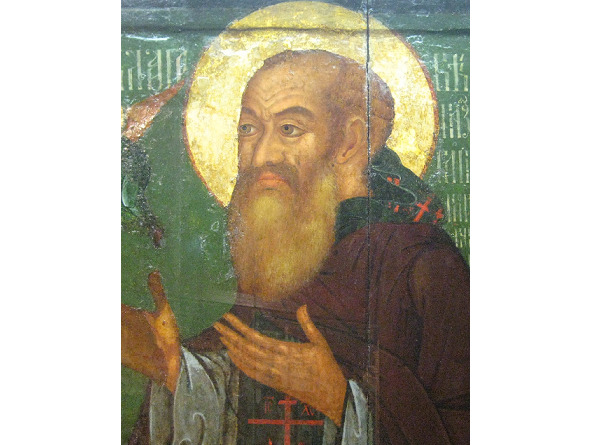
Basil the Third the Great, the first Russian tsar with legal grounds




